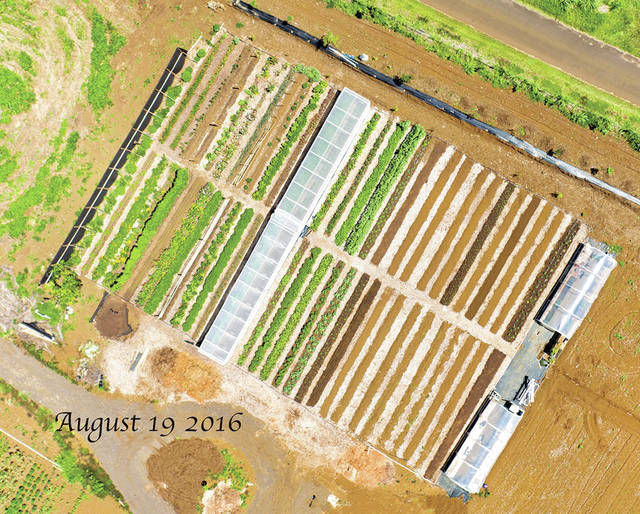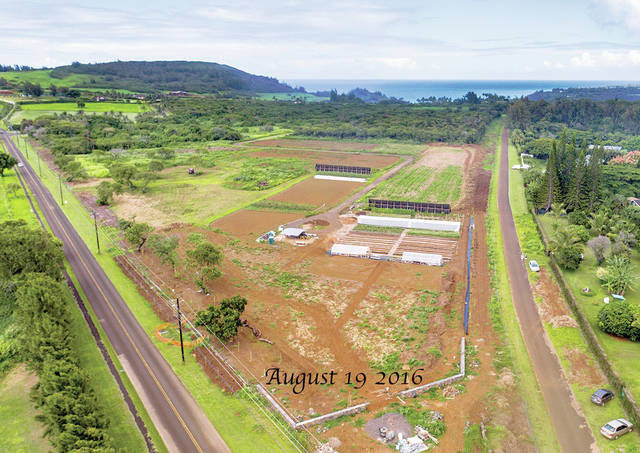KILAUEA — As agriculture enters a new era, farmers on Kauai’s North Shore want to weave technology and food hubs into their daily routines. And Kilauea Ag Park has applied for a grant from the United States Department of Agriculture
KILAUEA — As agriculture enters a new era, farmers on Kauai’s North Shore want to weave technology and food hubs into their daily routines.
And Kilauea Ag Park has applied for a grant from the United States Department of Agriculture to try and make it happen.
“Why food hubs? Because the only thing that will drive the success of farming is demand,” said Yoshito L’Hote, director of Kauai’s non-profit ‘Aina Ho’okupu O Kilauea.
USDA food hubs are a business model where various ag producers team up for things like distribution and marketing, and work together to access larger-volume markets.
“People need to demand that local product in order for that local product to compete in the marketplace,” L’Hote said. “Our job is to demonstrate that locally owned produce isn’t just superior, but it also directly benefits the people here in Kauai.”
The differences between food hubs and farmer’s markets are subtle. Farmer’s markets are a place for individual farmers to interface with the public.
Food hubs link individual farmers so they can distribute and market their products.
It’s a departure from the traditional farming philosophies that lean toward independent production, L’Hote said.
“In the past, if you developed something special that’s yours, you keep it a secret, you don’t share it with anybody and you keep your market alive,” he said. “Today there’s so much information floating around, everybody can copy you and use your market.”
So, farmers are working together to get their produce and value-added products to market and food hubs.
The concept fits together with Kilauea Ag Park and its community farm structure.
“The idea is to be able to tell a person with a great idea that we’ll help you develop it and give you the tools to grow,” L’Hote said. “That’ll create more jobs and demand for production, and then more funding happens.”
Alongside the creation of a food hub, L’Hote hopes to use grant money to integrate a wireless infrastructure at Kilauea Ag Park, in order to have access to better, quicker information about things like pest migration and soil quality.
Technology at Kilauea Ag Park will also help with the mountains of paperwork that have to be leveled before farmers can work in their fields.
“Our ag center is looking at technology as the next wave of farming,” L’Hote said.
Of course, digital monitoring of crop growth and all the other environmental factors at play in farming will help tighten up farming practices.
“When you can remove that (paperwork) burden, the farmer finds himself more able to farm, which is what we want to encourage,” L’Hote said.
L’Hote and his team are still working on securing grants and putting together a list of the equipment they’ll need to put Kauai on the technological edge of agriculture.
“There’s new technology coming in and it’s something that we can use,” L’Hote said. “It’s a good way to get the youth interested in farming, too.”



